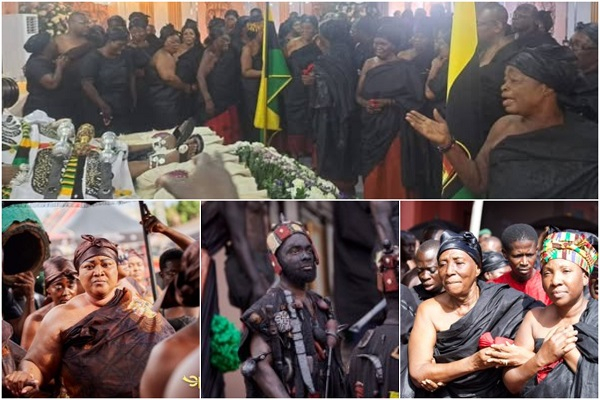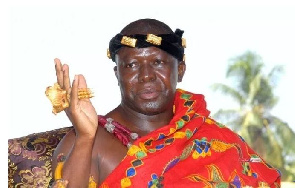Final Funeral Rites of Mamponghene Daasebre Osei Bonsu II Begin Amidst Cultural Grandeur

The final funeral rites of the late Mamponghene, Daasebre Osei Bonsu II, a revered figure in Asanteman and the occupant of the prestigious Silver Stool, commenced on Saturday, June 7, 2025, in Mampong, Ashanti Region. The rites, locally known as ‘Dote Yie’, will span three days and conclude on Monday, June 9, 2025.
The solemn ceremonies have drawn traditional leaders, royals, and dignitaries from across Ghana and beyond, honoring a paramount chief whose legacy is deeply etched in the cultural and political fabric of Asanteman.
A Gathering of Royals and Tradition
Saturday’s rites were marked by the presence of prominent chiefs and leaders within Asanteman, including:
-
Kwahumanhene Daasebre Akuamoah Boateng III
-
Mamponghene Abrempong
-
Effiduasehene Nana Adu Ameyaw II
-
Ejurahene Barima Osei Hwedie II
Their attendance signaled the immense respect Daasebre Osei Bonsu II commanded as the second most powerful ruler in the Ashanti Kingdom, next only to the Asantehene.
In a powerful gesture of continental solidarity and cultural kinship, a royal delegation from the Kingdom of Eswatini, representing King Mswati III, also graced the occasion. Their presence underscored the pan-African reverence for Daasebre Osei Bonsu’s contributions to chieftaincy and traditional diplomacy.
Touching Farewells from Family
One of the most emotional moments of the day came as the wife and daughter of the late chief offered their final farewells. Their dignified and heartfelt tributes reflected the personal loss behind the public mourning—a reminder that beyond his title, Daasebre Osei Bonsu II was also a husband, a father, and a family man.
The atmosphere was deeply reflective, steeped in Ashanti tradition, as mourners clad in rich red and black kente fabrics chanted traditional dirges, beat drums, and participated in sacred rituals reserved for the noblest of leaders.
A Life of Excellence and Service
Born December 31, 1939, Daasebre Osei Bonsu II passed away at the age of 86, leaving behind a rich legacy of leadership and service. He reigned as Mamponghene for 26 years, having ascended to the Silver Stool in 1999. His rule was marked by calm diplomacy, cultural stewardship, and commitment to the development of his people.
Before embracing traditional leadership, he was known in public life as Saint Oswald Gyimah-Kessie, an accomplished lawyer and economist. He notably served as the Registrar of the Kwame Nkrumah University of Science and Technology (KNUST), where his administrative acumen left an enduring mark on the academic institution.
His transition into traditional authority did not diminish his modern sensibilities. Instead, he blended contemporary governance and age-old customs with tact and foresight, earning him respect across generational lines.
Legacy and National Significance
Throughout his reign, Daasebre Osei Bonsu II was instrumental in promoting unity among the chiefs of the Ashanti Region. He played a central role in national discussions around chieftaincy reforms, land administration, and traditional justice. His wisdom and calm demeanor made him a trusted advisor not only within the Ashanti royal circle but also in broader national circles.
As Mamponghene, he was also the chief custodian of the Ashanti military wing, a historically significant position dating back to the Ashanti Empire’s resistance against colonial rule.
His passing marks the end of an era, but also sets the stage for a new chapter in the storied lineage of the Mampong paramountcy. His successor will inherit not only the Silver Stool but also the weight of a powerful legacy.
Looking Ahead
As the Dote Yie funeral rites continue through Monday, thousands are expected to pay homage to the late chief. The final day is anticipated to be the most ceremonial, with the climax of traditional rituals, gun salutes, and ancestral invocations.
The people of Mampong and the entire Ashanti Region are mourning not just a chief, but a leader whose dedication, intellect, and humility bridged the past and the present.
In the words of one mourner:
“Daasebre Osei Bonsu was a mirror of dignity and progress. His memory will live forever in the hearts of his people.”
Indeed, the spirit of Daasebre Osei Bonsu II remains woven into the cultural soul of Asanteman.
See visuals from the event below:





